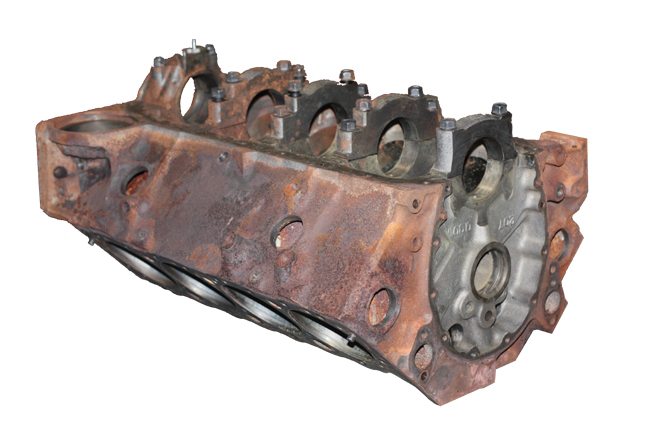
Make sure you examine a used block carefully for
wear and casting defects.
There are some things you want to watch for if you are picking up a used block. Obviously things like holes or broken parts of the casting would be bad signs, but you also need to be sure the main caps are the correct caps for the block and haven’t been abused. When you install the main caps on the block it should take some effort to snap them into place. If they are loose in the registers, they are either the wrong caps, or the mains have been severely overloaded by too much horsepower, or detonation. As the extreme force pushes down on the cap, it will pull in from the sides causing the loose fit in the register on the block. Also look for discoloration from heat, or signs that a bearing may have spun in the bore. In either case if the caps are loose, the block will need to be align bored and/or align honed. We will talk more about this later after we have cleaned and magnafluxed the block, and start our inspection process.
Another area to be careful of is core shift. Blocks (and heads) are cast using a sand core to keep the water jacket open. On occasion the sand core shifts causing the casting to be thinner or thicker in different areas than they are supposed to be. You look at things like the casting around the front cam bearing to see if the casting has the same margin all around the machined hole. Lifter bores can be another location with signs of core shift. Again look for concentricity of the casting compared to the lifter bore. If there are apparent shiftings in the core, stay away from it! Core shift can also mean less material in the cylinder walls than is safe.